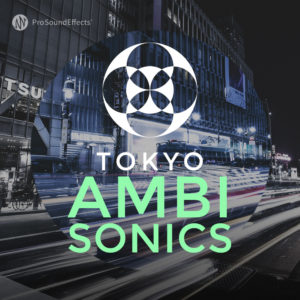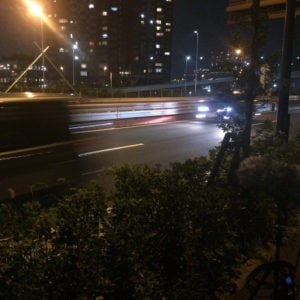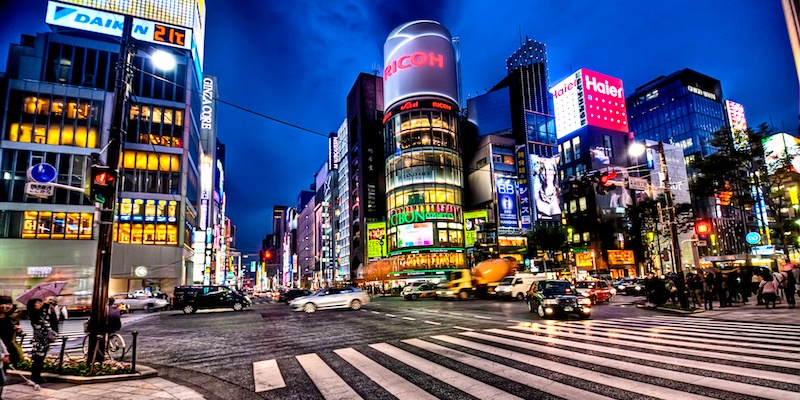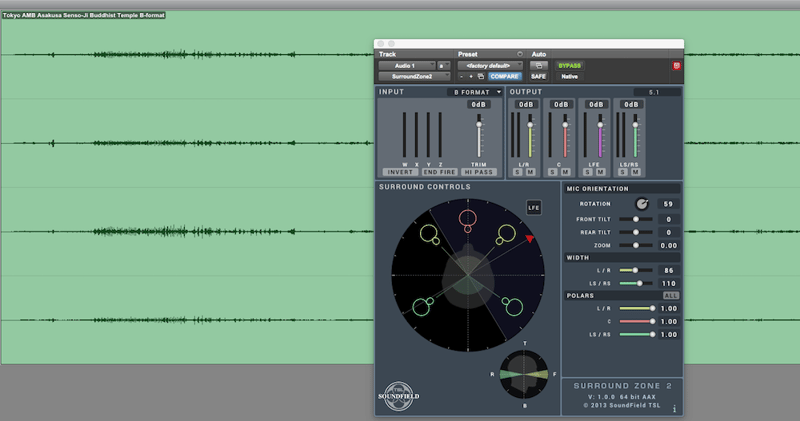by Andrew Emge
Tokyo Ambisonics lets users control perspective of pristine urban atmospheres in real-time with "virtual mic" software. Download the free sampler to try it out!
We spoke with Tokyo Ambisonics recordist, Masato Ushijima, about the recording process, his audio background, thoughts on the Ambisonics format & more.
PSE: Hi Masato! Can you share a little about your background and how you ended up recording Ambisonics libraries?
 Masato: I studied music and sound technology at Berklee College of Music with a major in Music Synthesis. In 2008, I came back to Japan and started working at a small game sound production company as a sound designer for 7 years. Fortunately, I had the chance to be in charge of audio management of the games WWE13, WWE2K14, and WWE2K15. Using my sense of sound design, my role was to help interpret and implement Wwise which was created and delivered from an audio team in the US.
Masato: I studied music and sound technology at Berklee College of Music with a major in Music Synthesis. In 2008, I came back to Japan and started working at a small game sound production company as a sound designer for 7 years. Fortunately, I had the chance to be in charge of audio management of the games WWE13, WWE2K14, and WWE2K15. Using my sense of sound design, my role was to help interpret and implement Wwise which was created and delivered from an audio team in the US.
When we started to use Wwise, it was not popular in Japan - there were no Japanese documents or forums from Audiokinetic. So, I had to really understand what audio middleware is and how it’s supposed to integrate with the game, and I had to communicate with the game designer, animator, and programmer both English and Japanese. Through that experience I became very familiar with Wwise.
After 3 years working on the WWE project, I started to do freelance sound design. Right after that, in early 2015, the Wwise certification system started in English. There were only a few Japanese people who knew Wwise in English, so I became one of the first Japanese Wwise-101 certified users.
Since then, I’ve formed relationships with game developers including VR developers. They understood that audio would become a huge portion of the VR immersive experience, but they didn’t know how to go about it because most information on VR audio is not available in Japanese. I would explain the basic principles of VR audio like Object-based sound, Ambisonics, HRTF etc., but they couldn’t truly understand how it would make the experience different. I decided I needed to have examples to help convince Japanese VR developers how important VR audio would be for their projects, so I bought an Ambisonic mic and started recording ambiences. I noticed that Ambisonic recordings from Japan are rare, and so I thought it would be an interesting library to create.
"I decided I needed to have examples to help convince Japanese VR developers how important VR audio would be for their projects, so I bought an Ambisonic mic and started recording ambiences."
 What was the recording process like for Tokyo Ambisonics? How did you choose locations?
What was the recording process like for Tokyo Ambisonics? How did you choose locations?
I used a SoundField SPS200 mic and tried to capture real-life ambiences unique to Japan. For example, I chose to recorded the Yamanote Line which offers many diverse sounds only found in Japan such as announcements, train sounds, Japanese walla, etc. That was the main point for choosing locations.
Additionally, Tokyo is big city. People are everywhere, even after midnight, so it was difficult to find ideal locations to record. I drove around and spent time to find locations where less people were walking. You need to be patient and move around if you have the chance to come to Japan for recording.
It was difficult to find good a spot for recording the Shuto Expressway. Usually the Shuto Expwy is very jammed - it’s a small lane with many curves, with both elevated and underground roads. I eventually captured a fantastic Shuto Expwy ambience which would be useful for any traffic scene.
 |
 |
| Shuto Expwy - Bayshore Route | Keihin Industorial Region |
What types of projects do you think the Tokyo Ambisonics library will be useful for?
Both YouTube and Facebook now support Ambisonic playback, so this library is definitely useful material for 360 video content. You can also get stereo and surround output from Ambisonic, so the library is great for anyone in need of Japanese ambience recordings.
What problems will this library help solve for sound designers and editors?
Japanese ambience libraries are not popular worldwide. If you are looking for some Japanese ambiences, the Tokyo Ambisonics library is just what you need. There is a wide variety of transportation sounds.
What do you think is important or special about the Ambisonics format?
Ambisonics is the only choice when mixing for 360 video. It’s almost impossible to create 3D ambiences that are both convincing and CPU-efficient with traditional DAW use, but the Ambisonics format lets you pan mono files in certain directions within the 360-degree field. Whether you’re working on a video or VR game, Ambisonic ambiences are going to be the foundation of your soundscape. Additionally, Ambisonics is the only format that lets you decode to any output format - you get many choices in the post production stage.
 Where can people follow you or your work?
Where can people follow you or your work?
I run Sonologic-Design post production group. If you are looking for more specific sounds outside of Tokyo Ambisonics but you cannot come to Japan, I can help you to get the sounds you need. Also, I am Wwise certified user and instructor, so I could provide comprehensive service for VR audio design. Feel free to contact me anytime.
---

















